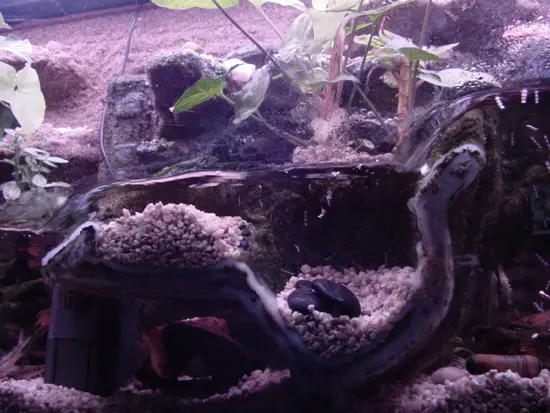Most aquatic plants and animals thrive well in normal water pH. There are a few cases where you may need to lower or raise the pH to suit specific fish breeds or plants that thrive in extreme environments.
In addition to that, pollutants and minerals among other factors may cause a rise in water pH and that calls for the need for adjustment. When the water pH drops or rises, it can cause stress to aquatic animals hence the need for adjustment.
In this article, we are looking at how to adjust pH levels in a riparium.
Before we delve into how to adjust the pH levels, we first need to understand the meaning of these terms.
What is pH?
If you are a student of science, you must have come across this term. It means the level or scale that is used to measure the acidity or the basicity of a solution. It is measured on a scale of 1-14, where the lover numbers 1-6 indicate the level of acidity, and the higher numbers 8-14 indicate basicity. 7 is a neutral point and is also the pH of pure water.
What Is a Riparium?
A riparium imitates an aquatic ecosystem with more focus on the water than on landmass. That makes it more habitable and sustainable for aquatic animals and terrestrial vegetation. It is also called a riverbed aquarium or a river tank that mimics wet habitats or shorelines.
The riparium vegetation is rooted in saturated soil and with hanging and floating vegetation. In addition to that, ripariums, unlike paludariums, typically have a small landmass and more water mass.

Plants in a riparium are normally planted in floating containers attached to an artificial reservoir.
Some of the characteristics of a riparium include suitability for any kind of plant. As for the animal part, fish, aquatic crabs, snails, shrimps, and crayfish are some of the common and suitable animals for a riparium.
The Need for pH Adjustment
Low or high pH may cause some stress to aquatic animals that are already adapted to normal water pH. Some conditions can cause water pH to rise or get low such as pollutants and soil composition and hence calls the need for adjustment.
The pH can be normal but you may also need to adjust the pH to suit some specific species that thrive well in high or low pH. Therefore, you should always take precautions to ensure you are not stressing the riparium inhabitants when changing the pH.
Therefore, if it is necessary to change the pH, you should avoid sudden changes. Below are ways that help raise or lower pH levels.
How to Lower pH in a Riparium
There are so many conventional ways of lowering the pH of your riparium or river tank. One way is to add some chunks of driftwood or allowing the aquatic plants to decay in water will help lower the pH of the water gradually.
Another way that will help lower the pH is using peat moss. You can use it along with activated carbon to help in reducing discoloration over time. In this case, you can put the peat moss in a mesh bag and put it inside the riparium filter. This is a sure and common way to help in lowering the pH.
Reducing the aeration in the riparium and increasing the carbon dioxide (CO2) levels will also work perfectly in reducing the pH levels. Adding some nitrates can also help reduce the pH. However, you should take precautions when changing the pH to ensure that it is not sudden but gradual. This is to help reduce the stress that water animals may undergo.
Reverse osmosis is another way of lowering the riparium pH. This seems to be a bit complex for a novice but is the best strategy. It is a way of de-ionizing water hence reducing the pH levels.

How to Raise pH in a Riparium
Some instances for example if naturing some water species or type of fishes that thrive well in high Ph would require a raise in your riparium. There are several convenient ways to achieve a high pH but you should get some insights on what works best without causing harm to those aquatic species.
It is also important to be extra cautious not to saturate the water. One of the easiest ways of raising the pH of your riparium is to add some baking soda. The amount of baking soda that you will add will depend on the size of your riparium.
One of the precautions to make is to first ensure that there are no aquatic animals in your aquarium when adding baking soda or other substances. This is because a sudden change in pH can be stressful or even fatal to your species.
Crushed corals and dolomite chippings are also useful for raising the pH of your riparium. Therefore, you ought to choose a method that is convenient and beneficial for your riparium and all its critters.
How to Stabilize the pH
High alkalinity or acidity may not be conducive to so many water species, except a few. It can be stressful and toxic and can even increase the fatality of aquatic animals. When this is the case, stabilizing the pH is the only option.
Since normal pH is ideal for most aquatic species and plants, there is a need for adjustment. If your riparium pH is high or low, you may need to employ the above techniques, in a monitored way depending on the need for change. In addition to that, you may want to change the water completely if it is saturated for a better aquatic environment.
Conclusion
We hope that the above tips will be helpful for riparium management. Depending on your case, and the need for adjustment, the above steps have proven to work. However, you should always try not to alter, saturate, or discolor your riparium water; the animals are showing no signs of stress.






